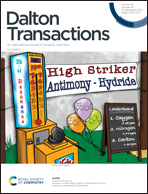NiO-decorated graphitic carbon nitride toward electrocatalytic hydrogen production from ethanol
Abstract
In this study, exfoliated g-C3N4/NiO nanocomposites were synthesized by the heat treatment of urea and subsequent ultrasonic exfoliation of the colloidal solution with the introduction of nickel acetate. Ultrafine nanocomposites were obtained after repeated heat treatment and were marked as initial g-C3N4, g-C3N4/NiO 2.5%, g-C3N4/NiO 5.0%, g-C3N4/NiO 7.5%, and g-C3N4/NiO 10%. The successful attachment of NiO to the surface of g-C3N4 was further confirmed by the results of TEM and SAED. The average sizes of the coherent scattering region, determined by the broadening of the reflex (002), were 11.6, 10.4, 10.4, 9.9 and 9.9 nm for the initial, 2.5%, 5.0%, 7.5%, 10% samples, respectively. The obtained powder of graphite-like carbon nitride and the NiO-composites, according to the results of low-temperature nitrogen adsorption, had a mesoporous structure and was characterized by an average pore size of 16.6–20.8 nm and a porosity of 0.40–0.57 cm3 g−1. It was found that increasing the amount of nickel oxide in the composite had a positive effect on the electrochemical characteristics of the electrode during electro-catalytic reforming – hydrogen evolution from a water–alcohol solution. The g-C3N4/NiO 7.5% nanocomposite showed the best results. Based on voltammetry, it was found that the overpotential of the hydrogen evolution reaction on graphitic carbon nitride equalled 215 mV (at 10 mA cm−2) and the Tafel slope was 95 mV dec−1. The results of the cyclic voltammetry of the electrode based on exfoliated g-C3N4 indicated its high stability.



 Please wait while we load your content...
Please wait while we load your content...